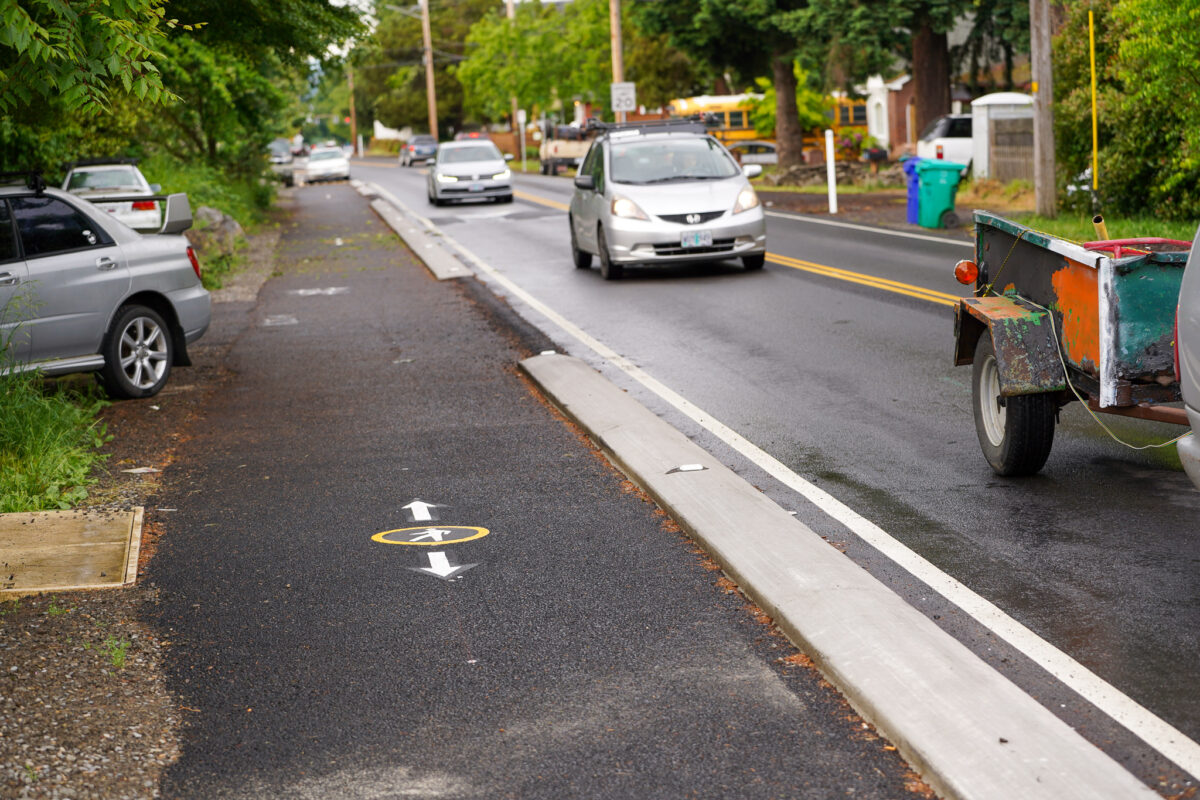
(Photos: Jonathan Maus/BikePortland)
Last month the Portland Bureau of Transportation took the wraps off a pilot project for a new type of facility that aims to improve walking conditions without the expense or complication of building a full-fledged sidewalk. They call it an “alternative pedestrian walkway” and the first one has been built on a one mile stretch of Northeast 60th between Going and Lombard in the Cully Neighborhood.
Identified as a major walking corridor in the city’s pedestrian master plan (Ped PDX, 2019), 60th was like many streets in Cully and other less-developed parts of Portland: it had two general lanes and no space for shoulders, bike lanes or sidewalks.
To get the space for a six-foot wide walkway on one side of the street, PBOT shifted the centerline over about four feet. They then leveled and paved the existing gravel shoulder. The walkway (more photos below) is separated from other street traffic by a concrete curb similar to the ones PBOT has used on North Rosa Parks Way, Lombard, and elsewhere. There are breaks in the curb for driveway access, but PBOT has added a tiny asphalt bump to remind people the walkway is there and to push stormwater away from private property. (I haven’t seen PBOT use this type of tiny paved curb in this context before.) The intention of the space is communicated by a pedestrian marking on the pavement.
Advertisement
At crossings, PBOT has added zebra-striping, truncated domes (those tiny yellow bumps), and a few plastic delineator wands. The walkway is on the west side of 60th between Prescott and Killingsworth and it shifts to the east side between Killingsworth and Lombard.
As we shared in our first story about this project in 2019, these walkways aren’t designed for use by bicycle riders; but it’s certainly allowed. Until PBOT establishes good bikeways nearby, this could become a useful bikeway. I rode on it from Alberta north to connect to bike lanes on Killingsworth. I kept my speeds very low and rang my bell in case anyone was walking nearby, treating it more like a crowded multi-use path and less like a bike lane. I found it to be quite nice and it felt very safe.
In addition to the walkway, PBOT has added “fire-friendly speed bumps” (the ones with the channels through them) so that people have an easier time staying within the 20 mph speed limit.
Check this out next time you’re in the neighborhood. If you’ve already experienced it, please let PBOT know what you think in the comments.
— Jonathan Maus: (503) 706-8804, @jonathan_maus on Twitter and jonathan@bikeportland.org
— Get our headlines delivered to your inbox.
— Support this independent community media outlet with a one-time contribution or monthly subscription.



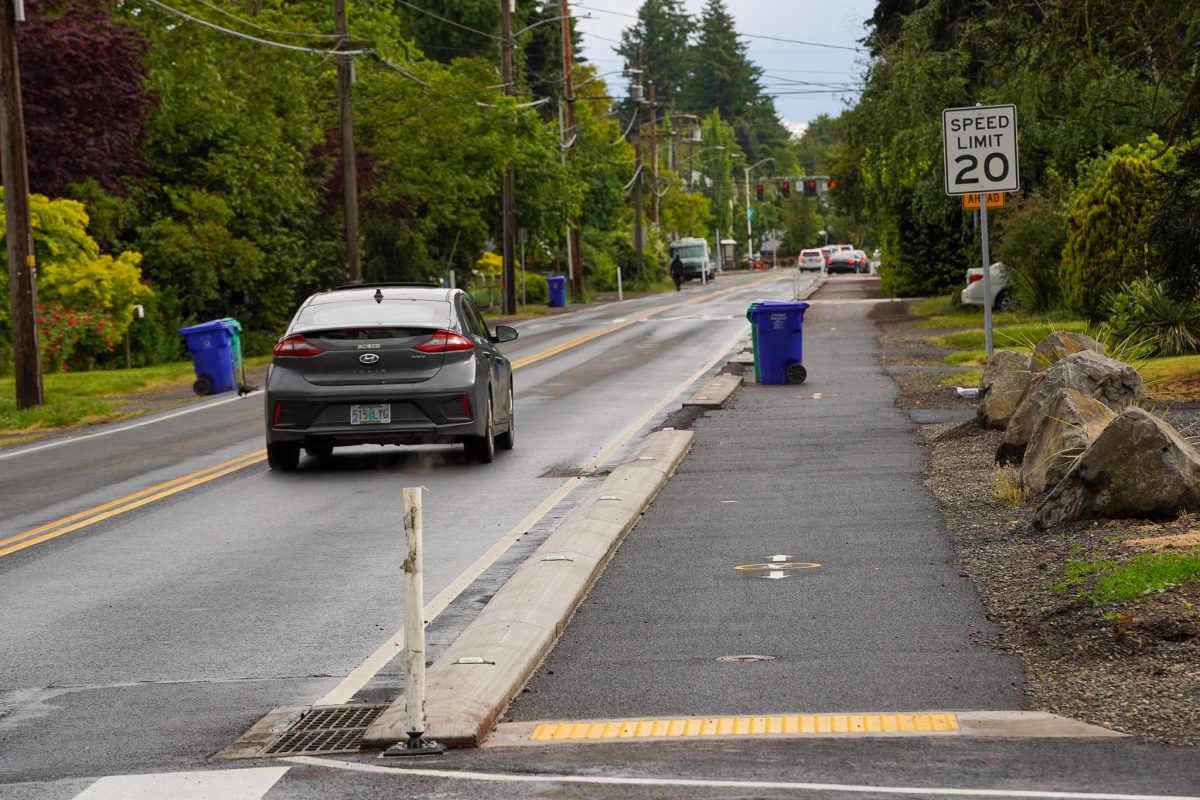
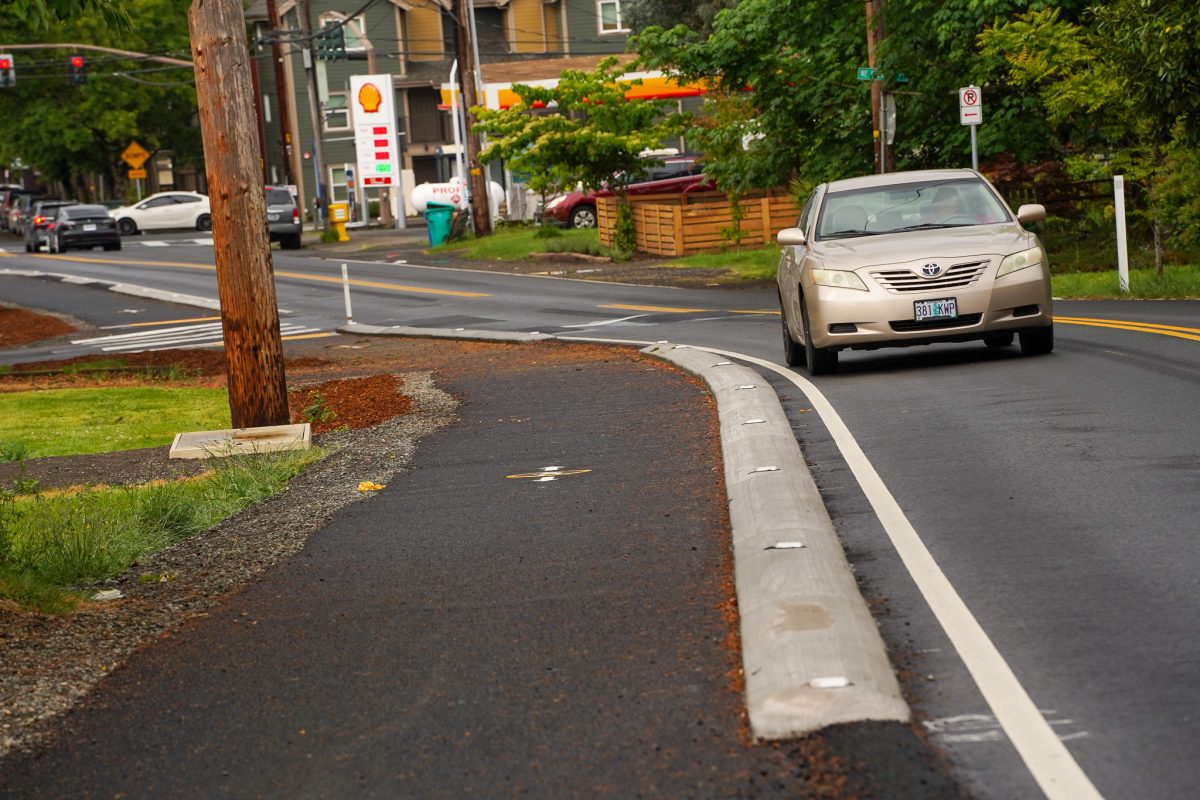



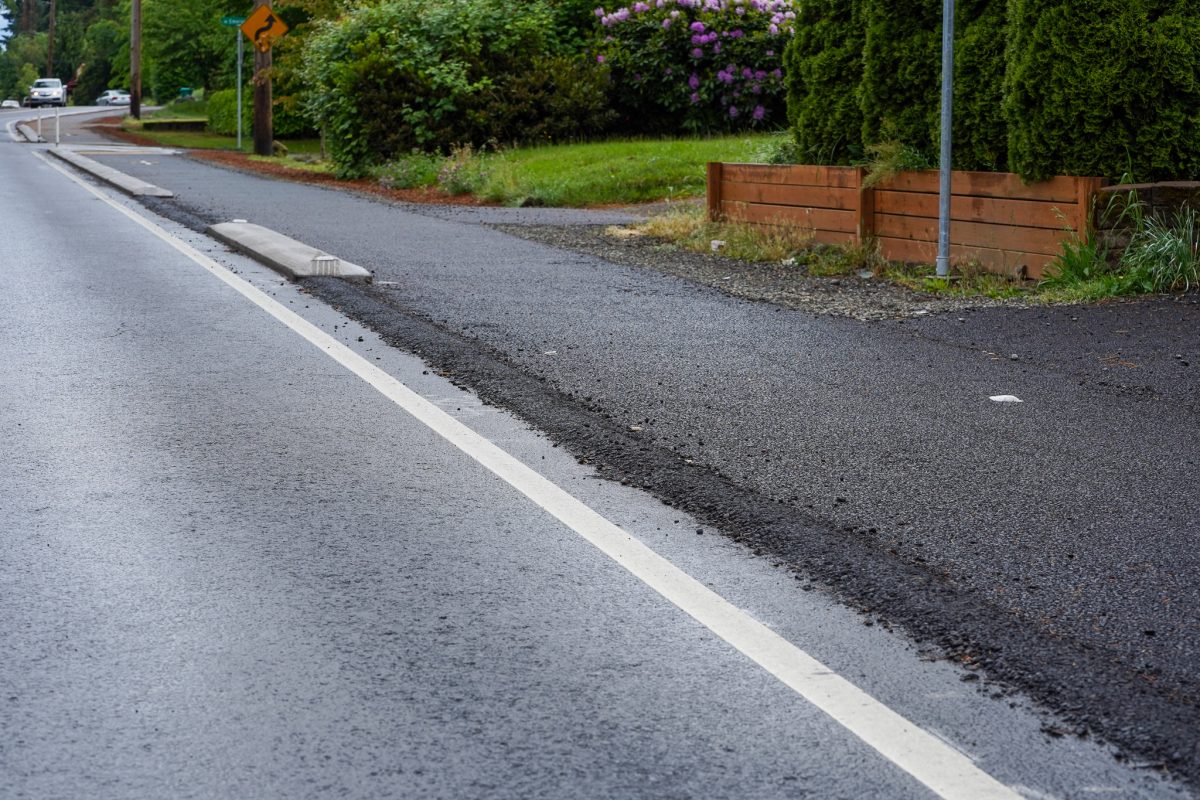
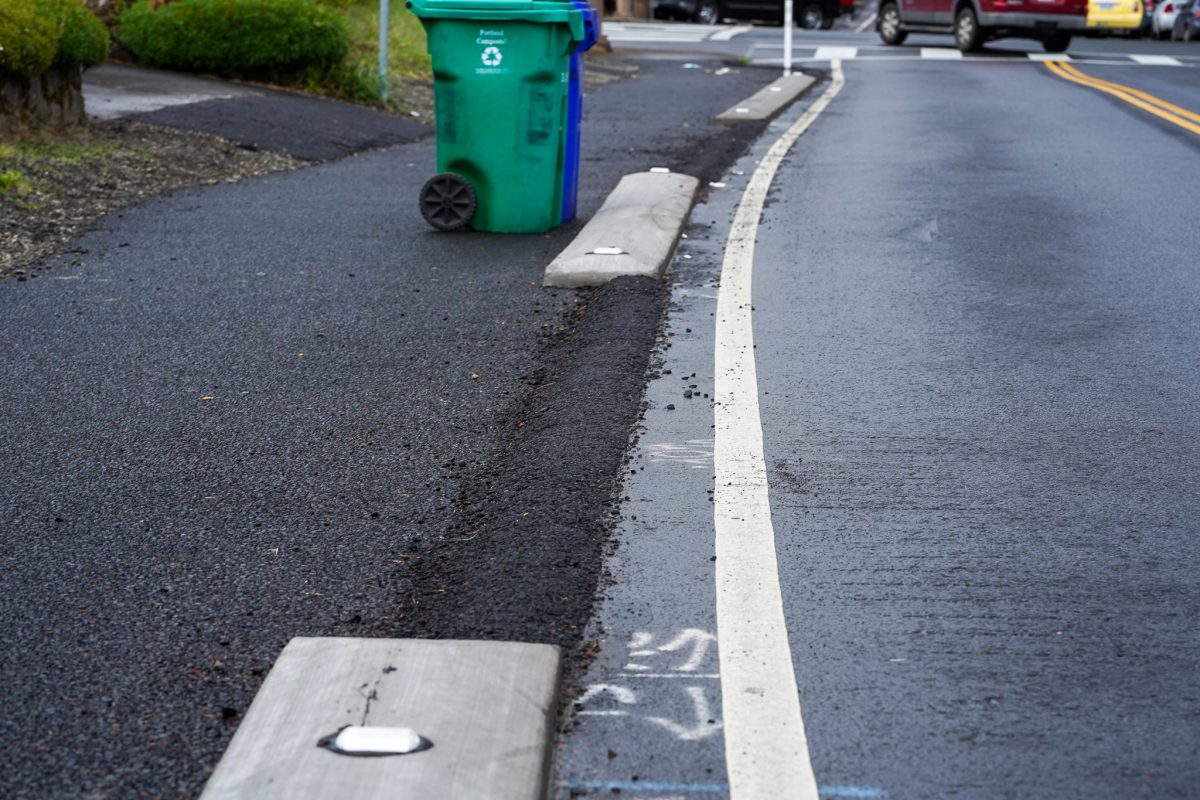
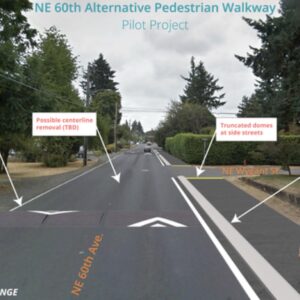
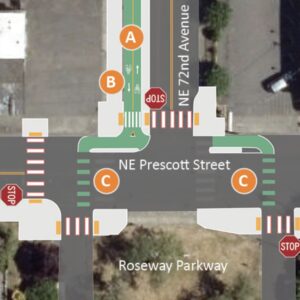
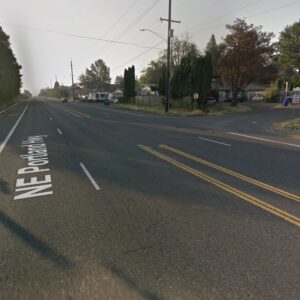
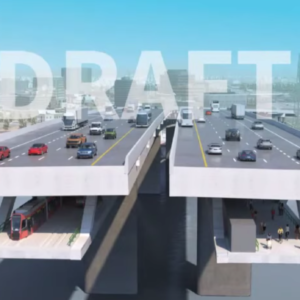
Thanks for reading.
BikePortland has served this community with independent community journalism since 2005. We rely on subscriptions from readers like you to survive. Your financial support is vital in keeping this valuable resource alive and well.
Please subscribe today to strengthen and expand our work.
We don’t need novel infrastructure, we need consistent and intuitive infrastructure! Until PBOT gets this through their heads, we’re just going to see more collisions and injuries as people are constantly confronted with new and unexplained infra.
Pbot, the bureau of confusion sounds about right. I was talking my neighbor yesterday about Hawthorne and he drives a big truck and he says “that rout is very confusing now.” Made me feel safe as a cyclist. :/ Consistency makes it easy for the ones doing the killing to have less of an excuse for when they do so.
I’m concerned that Hawthorn would be confusing. This doesn’t pass the sniff test. Did they indicate what is confusing about it?
This seems like a rallying cry of BP comments but its always sparse on examples, in my mind all that comes to mind as confusing is cross bikes because of the legal ambiguity. I’m honestly curious as to what else people have issues navigating.
Good question. What, specifically, is confusing about Hawthorne? To my eye, you could plop that road down anywhere in the US and it would be right at home.
Only thing unusual about Hawthorne is the width of the lanes. Which may be confusing to your neighbor in a big truck, of course.
Here’s an example of inconsistent and confusing infrastructure: the entire 20s Bikeway!
Another example: every single diverter seems to be different. Make them consistent. And another: to green paint or not to green paint bike lanes? Make the marking consistent.
Legal ambiguity of cross bikes, can you elaborate please?
This project looks pretty intuitive to me. And it may be novel for PBOT, but it’s similar to other projects in the Portland area. It basically creates a sidewalk at a fraction of sidewalk costs. There are hundreds of miles of streets here that this solution makes sense on, so within a few years it’s not likely to seem novel at all. PBOT took on the issue of Portland’s need for sidewalks outstripping the money available for them, and came up with an intelligent solution. I agree inconsistent infrastructure can be confusing and unsafe, but I don’t have that criticism here.
Just curious….does anyone know off hand what the ROW width is through most of this legacy county arterial?
60 foot right-of-way, same as most two-lane streets in Portland.
Thanks.
None of this is particularly new in the metro area, it’s just new for PBOT: There are similar set ups on outer Powell within Portland, on Yamhill in Gresham, and at another location in Milwaukie.
Outer Powell: https://www.google.com/maps/@45.4986875,-122.5131068,3a,75y,313.03h,90t/data=!3m6!1e1!3m4!1sYp60HxJ2FAKxyokVu21oBQ!2e0!7i16384!8i8192
Gresham Yamhill: https://www.google.com/maps/@45.5155064,-122.4642457,3a,75y,117.89h,90t/data=!3m6!1e1!3m4!1sPsH_L4J3EROWm3rHBnwCHg!2e0!7i16384!8i8192
Milwaukie (one of several examples): https://www.google.com/maps/@45.4352611,-122.6272375,3a,75y,270h,90t/data=!3m6!1e1!3m4!1sv9TcanSDrdLgroBTynrPEQ!2e0!7i16384!8i8192
I thought that Milwaukie/Lake Road path was just an old, crappy, narrow, overgrown sidewalk. The whole street is mid-makeover right now, including bike lanes. https://www.milwaukieoregon.gov/engineering/lake-road
The SE 17th side path is probably the better, modern, intentional example. It works well, too, despite the barrier being a weed strip and not concrete curbs. https://www.google.com/maps/@45.4540011,-122.6463186,3a,75y,188.71h,88.11t/data=!3m6!1e1!3m4!1sW1GkpGJaFcReDRsCZfBk9g!2e0!7i16384!8i8192
The Milwaukie – Lake Rd example will soon be demolished in favor of adding a westbound bike lane to this segment of road. The sidewalk on the south side will remain for pedestrian use.
They tried selling these to out NA without much fan fair. The city is cheap and is basically telling working class families that they won’t get what the more wealthier neighborhoods receive. This is an easy “no thanks.”
What are the wealthier neighborhoods getting? Their sidewalks were build 100+ years ago when the houses were built, and every owner since has paid to maintain said sidewalks. People pay tens of thousands to repair root damage and other concrete degradation.
Yep, homes in neighborhoods with real sidewalks cost more because they are a desirable amenity. The city shouldn’t be building sidewalks and be giving them away for free. These “sidewalk lites” on main routes seem like a reasonable middle ground. If a neighborhood wants real sidewalks, bonds for
sidewalks can be issued and the homeowners could pay them off over time. Of course everybody wants them if they are free.
Not True! PBOT is spending about $4 million a year for ADA upgrades on corners where sidewalks already exist. What are they billing the Homeowners?
This is a decade’s long crusade for me…short version…I used to live in Eugene, where they would put curb cuts on 10% grade corners, where no disabled person would ever be…moved to Bend…under court order, has spent millions of dollars on suburban curb cuts and I, an inveterate walker, have never…I mean, never seen a disabled person using them…btw I fully support curb cuts where the disabled actually traverse.
What is your “crusade” exactly?
Curb cuts are one of those “useful to WAY more than the original use case”, to the point that there’s an entire UX effect named after them. Maybe the specific places are areas where nobody ever walks and there’s no way pedestrians can physically access the curb? Otherwise, using curb cuts as an example of waste is nonsensical.
The city owns the corners outright, not the homeowners on the corners. Everyone pays for the ramps through general PBOT revenue. There never will be a bill.
By saying ‘no thanks’, all you are really just saying ‘nothing is better than something’.
Exactly. Why, because there are many options to these wannabe sidewalks. Most options included the plastic wands. Those unfortunately won’t stop people speeding up and down the street as well as make anyone feel “safer.” These will also be coming to a Safe Routes to School near you.
Almost all the sidewalks in Portland were built by housing developers when the neighborhoods were first developed. “Wealthier neighborhoods” have sidewalks because right now the wealthier neighborhoods are mostly in old neighborhoods. 30 years ago it was the opposite, poor neighborhoods in inner Portland had sidewalks and wealthy neighborhoods in outer Portland had no sidewalks. So it’s not really accurate to claim that wealthy neighborhoods are receiving more public investment in sidewalks, quite the opposite, most new publicly-funded sidewalks are being built in East Portland these days. It’s just that anyone living in the streetcar-era neighborhoods benefit from housing developers 100 years ago building sidewalks as the standard thing you would do back then.
Agreed – a very sensible and concise summary. If you want to be annoyed about the lack of sidewalks in these neighborhoods, go back in time to yell at the developers (and City development review) when these newer homes were put in. While older (now wealthier) neighborhoods have these dishy sidewalks, they also have ancient (aka 100 yr old) water services and sewer laterals, the burden of replacing/repairing falling on the homeowner. Infrastructure asset management is a difficult thing for a City, with so many metrics to cover.
Strikes me as a huge improvement.
I see it as a positive thing – lower budgets likely means more gets done, sooner, for safer walking / riding.
Poor Cully, gets the asphalt and paint. No real sidewalks here. Large waste of money for a “temporary fix”
Phil Jay,
The residents of Cully could pay for real sidewalks via bonds if they really valued them.
Cully is a mostly low-income neighborhood that was only recently annexed by Portland in 1985, meaning the grid & infrastructure is much like outer East Portland – rural character, gravel roads, no sidewalks. The only sidewalks here are mostly on major streets, and even then there are still significant gaps on Killingsworth that are just now being filled in.
Might not apply to 60th per se, but generally folks in Cully have been outspoken about wanting to preserve the rural feeling character of their roads. It’s part of what many people like about the neighborhood, though there are surely exceptions. This seems like a good solution for that.
Some of the streets in the Cully are embarrassing. I’m looking at you, Mason between 60th and 72. Frickin’ goat path.
This is a great idea and long overdue- the City is never going to make meaningful progress on our woeful backlog of pedestrian facilities, given the immense expense of sidewalks and inadequate funding, unless we have low cost options such as this. Its as simple as that.
Yet we’re about to spend $65 million for CCIM and there’s adequate infrastructure already there. $29 million for the “Green Ring” in inner neighborhoods and downtown. That kind of money would build a lot of Safe Routes To School infrastructure in areas that lack the most basic amenities.
You are obviously not a frequent pedestrian. This is anti-pedestrian. Just imagine you are an elderly walker approaching from the right rear of the car backing out without seeing you, then tell me it is a ‘great idea’. Yesterday, I was almost hit twice in a shopping center parking lot in this exact same situation. True story.
Can you explain why this design is significantly different from a sidewalk (in terms of safety)? The exposure to danger in your example is no different with a sidewalk. There are two significant differences other than safety: cost (much less) and stormwater drainage (potentially, but that’s why we need to experiment).
Looks too easy to park a car on that
Yeah, that car-side edge needs to be a lot more abrupt. Maybe with some tacks on top too.
More low albedo impervious surface. The opposite of environmentally friendly.
It’s permeable
I live on this street and I love the new protected pathway. Finally some physical barrier to shield people from the traffic. It’s common in Europe but a novelty in the US
The infrastructure for walking traffic in Europe is so much better than it is in the U.S – its literally embarrassing
Downtown: “Spared no expense”
Cully: Sidewalks are *checks notes* a “complicated expense”
This is why we have wrecked your precious downtown. The City of Inequity.
You are admitting to criminal acts?
The Flanders Pedestrian Bridge is a total extravagance for example. I bike commuted in that area for 5 years and found no need for a bridge there. Meanwhile Cully doesn’t even get real sidewalks.
How long ago? I bike commuted between the waterfront and trendythird for several years around 2009. Crossing 405 was a bit of a pain and merging with people coming right off the freeway was honestly scary. I can see how an explicit bridge would be useful. I agree Cully needs real sidewalks but “total extravagance” is an overstatement from someone who admits they don’t currently make that trip either.
Learn to read what I wrote please.
It’s nice to hear something about Portland that’s positive for a change. I’ve walked that stretch of road many times and one had to be overly cautious. I was young and spry back then, but not everyone is young and spry.
This is a long-anticipated piece of infrastructure that was originally part of a 2012 grant of Regional Flexible Funds. When BES wanted to require stormwater improvements, the cost became too great for the grant. PBOT staff, especially David Backes, redesigned the project and found funding for it. Cully is very grateful for this important pedestrian improvement. 60th Avenue is a narrow local street that receives too much cut-through traffic because it is continuous from Prescott north to Columbia with lights at Killingsworth and Lombard. We needed this.
I love the phrase “truncated domes.”
I’ve always known ’em as Bott’s-Dots.
As an inveterate pedestrian, I can’t tell you the number of times that I have almost been hit by cars backing out from designs like this. Not ped friendly. Drivers cannot see peds approaching from their back right until it is too late.
How is it different from walking on a sidewalk?
Most sidewalks cross driveways that enter parking lots. They do not cross directly behind parked cars. This is a typical ‘favor the automobile’ design.. It allows cars to drive in and out unencumbered, while peds coming from the right are sitting ducks. It is like the ubiquitous roundabouts in Bend. They force cars and bikes to ‘share’ the same space with no warning, no yield signs, nothing. When I point this out, drivers say ‘well you could just use the crosswalks’.
I’m not following you. This street has the typical situation of other residential streets, where cars park in driveways in front of houses. They drive in from the street and back out onto it. They cross the new path when they drive in and back out, just as they’d cross a sidewalk. The only difference between this and a sidewalk is the path is asphalt at street level, instead of concrete slightly above street level. The locations of cars relative to pedestrians is exactly the same. People walking on sidewalks do cross directly behind cars parked in driveways, just as they do on this new path.
If this is non-commercial residential parking, then I agree with you, because backing out is so infrequent in a purely residential neighborhood. I do not know this area, but the cars are parked so close to the roadway, it does not look like a typical residential situation.
It’s the MOST typical single-family home parking situation in Portland or any other city I’ve ever lived in. People park in their driveways in front of their garages, so the ends of their cars are close to the sidewalk (or path in this case).
“Backing out is so infrequent in a purely residential neighborhood”? It’s the ONLY way to get out in typical Portland neighborhoods. Drive in, back out. Large-lot suburbia may be different.
Really, this path is exactly the same as a sidewalk in terms of pedestrian safety relative to cars coming out of driveways.
OK I first read that as “invertebrate”, not “inveterate”, and was super confused for way too long. 🙂
This new treatment looks wonderful, particularly for the areas of town lacking pedestrian infrastructure, like east and southwest Portland.
The narrative that the city preferentially favors rich parts of town with sidewalks just ain’t so. SW Portland is wealthier than other areas of town, its median income is about 50% higher than the median of the entire city. But SW Portland also has the least sidewalk coverage of any area in the city, 66% of the arterials and neighborhood collectors lack sidewalks on both sides.
One reason some areas of town have sidewalks and some don’t has to do with when the region was annexed to the city from the county. SW was annexed between 1950 and 1979; East Portland, after 1980. The parts of the city with sidewalks have mostly had them for at least 100 years.
The other reason is the lack of stormwater infrastructure. Much of the SW doesn’t have the pipes or treatment facilities to handle stormwater runoff. Instead, the water flows in open trenches a couple of feet deep at the side of the road. It sounds like Cully also can’t deal with stormwater.
Stormwater facilities are expensive. The one mile of bike lanes and walkways on the SW Capitol Highway project will cost $26M. Almost half of that money will pay for stormwater collection basins.
I think it is a fair question to ask why the city didn’t deal with this many, many years ago. But in the case of SW Portland, many residents liked its sidewalk-free, “rural” character, although I think that attitude has changed over the past couple of decades.
As far as how the city currently prioritizes, look at the PedPDX sidewalk prioritization map, it’s obvious that the equity component weighed heavily in the outcome. (In fact, race and income each counted for more points than presence of multiple deaths, or having over four lanes.)
The information is out there.
PedPDX — https://www.portlandoregon.gov/transportation/78224 Chapter 5, pages 120, 124
Southwest in Motion Plan — https://www.portlandoregon.gov/transportation/article/753285 page 6
The main reason so few sidewalks were built in EP, SW, and in most of the rest of the country after 1950 was that most city governments (and all state DOTs and the feds) felt that moving people by car was safer for all people in general, and that building sidewalks would only encourage dangerous behavior like walking. You can see this in the technical manuals from the 1950s and 60s and in planning documents well into the 90s. I’ve even met old engineers from ODOT and especially NCDOT who still claim such nonsense.
I live in Greensboro NC and apparently the city engineer of the city in the 1960s and 70s is still alive and is now wheelchair bound and regretting designing so many major arterial streets to specifically exclude bicycles and sidewalks – they deliberately made the streets too narrow for added bike lanes unless a traffic lane was removed, and they again deliberately made the right-of-way up to the edge of the curb so that any land for sidewalks would have to be purchased from homeowners or condo owners.
I don’t foresee this as stopping people from parking on the path. Also, several garbage cans are shown on the path. Seems like a hasty attempt to please all parties. And not spend money.